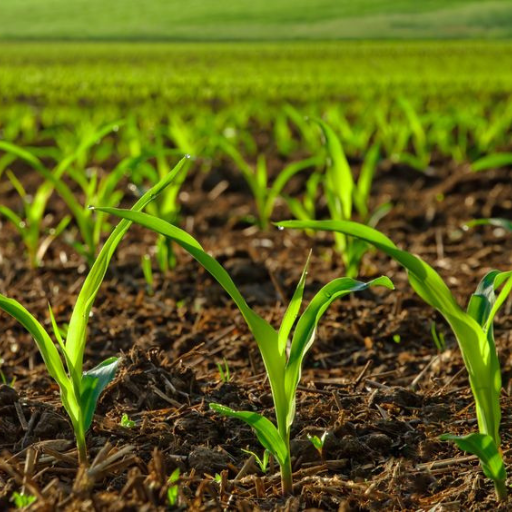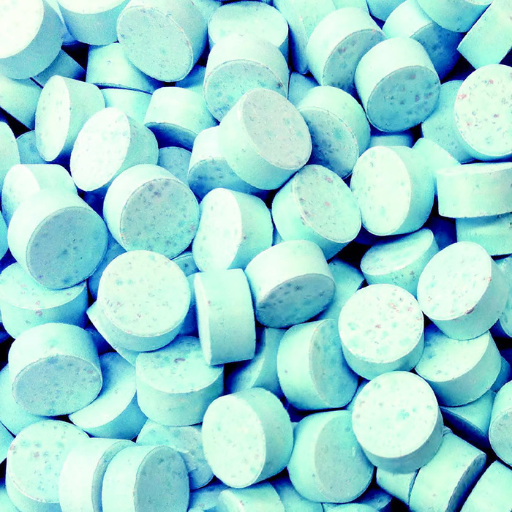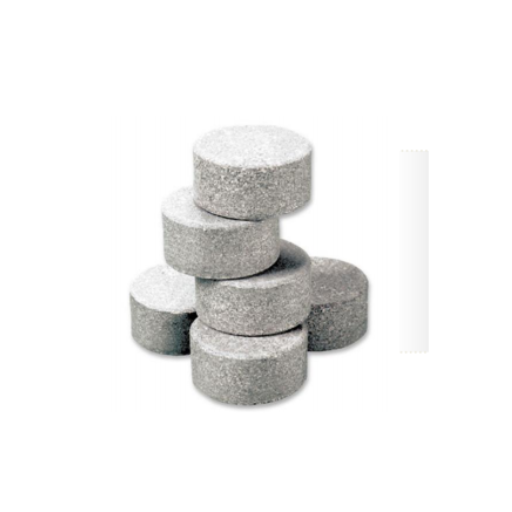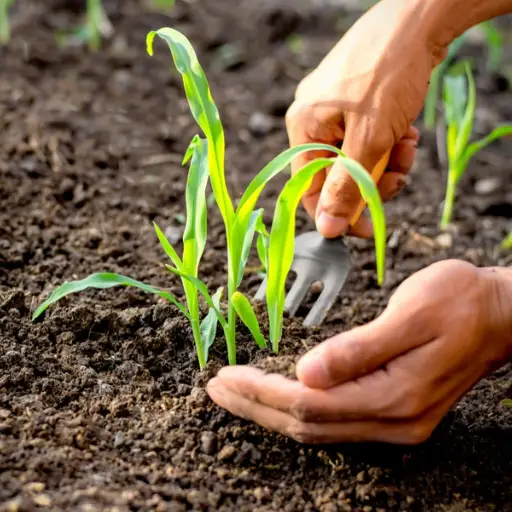In today’s agricultural practices, sustainable and efficient nutrient management is of great importance. Slow-Release Fertilizers (SRF) play a pivotal role in this context by offering a controlled method of nutrient delivery to crops. This not only reduces the frequency of applications but also minimizes nutrient leaching into the environment, thus addressing environmental concerns associated with conventional fertilizers. The subsequent sections of this blog will delve into the mechanisms behind SRF technology, its benefits over traditional fertilizers, and real-world applications that showcase its effectiveness in enhancing crop yields and promoting environmental stewardship. By understanding the science and practice of SRF fertilizers, readers can appreciate their potential in driving sustainable agricultural practices.
What are SRF Fertilizers?

Definition of SRF and its Relevance
Slow-Release fertilizers (SRF) are a type of fertilizer that focuses on the gradual and controlled release of certain nutrients that can be continuously available to the plants. This is critical because it will avoid plants being overwhelmed by too many nutrients added all at once such as Nitrogen, Phosphorus, and Potassium. There are also advantages of slow release where increased nutrient use efficiency will occur due to the controlled release of the nutrient at a time when the crop is growing. In terms of other applications, SRF fertilizers are valuable since they assist the farmer to apply less fertilizer at once which means reduced labor requirements and reduced chances of fertilizer loss through runoff. Because of this, environmental concerns such as water pollution are reduced while sustainable agriculture is promoted to maintain soil productivity and health over an elongated period.
How SRF is Different from Conventional Fertilizer
Slow-Release Fertilizers (SRF) differ from conventional fertilizers most notably with their release of nutrients and environmental effects. Commonly used fertilizers are quick to deliver nutrients to plants, which increases the chances of plant uptake and possible nutrient pollution of the environment by leaching. SRFs, on the other hand, are specifically designed to provide nutrients in a stepwise fashion, thus supporting growth and lessening chances for leaching and runoff of nutrients. This reduced rate also helps in the efficient utilization of nutrients and requires less frequent applications, thus reducing the burden and costs associated for the farmers. Similarly, the engagement of SRFs also enables soil protection which is helpful in soil health by decreasing possible salt accumulations and promoting sustainable agriculture systems.
Key Components of Slow-Release Fertilizers
SRF stands for Slow-Release Fertilizer which contains of nutrient coating materials and this is one of its main components. Coating this encapsulated the nutrients and this encapsulated the nutrients regulating its release into the soil. These coatings are usually made from polymers or sulfur or even synthetic resins which have different properties concerning rates of release. Moreover, the granule size and the nutrient composition determine the fertilizer effectiveness and its longevity. Other types of SRFs may also contain inhibitors that alter available nutrients by modifying the soil chemistry. In conjunction, all these components provide the needed nutrients in a gradual and controlled manner over the required period rest assured that the environment will be minimally disturbed.
How Do Slow-Release Fertilizers Work?
The Release Mechanism of Nutrients
The materials such as fertilizer and urea which are organic fertilizers and crop nutrients can be released slowly if they are incorporated into plants. These are predominantly created with a substantial level of integration of diffusion to external conditions functioning as their primary mechanism as such types of fertilizers are resilient to external agricultural forces and greenhouse gases. Water slowly penetrates the coating based on the soil temperature and moisture that controls when the nutrients are released into the soil and when they should be absorbed. This minimizes the application of fertilizers where too much nutrients are used causing environmental degradation. Other advanced formulations may also have biodegradable materials or temperature-controlled coatings to allow for fresh and more precise thrust up to the requirement whenever the plants require it Innovative strategies are being developed to entice additional desires and be able to meet the accelerated growth conditions.
Comprehending the pattern of nutrients release
The nutrient release pattern of slow release fertilizers’ nutrients is influenced primarily by the surrounding climate conditions and the formulation of the fertilizer itself. Nutrient diffusion through the coating material is inversely affected to temperature and moisture content. The American agricultural scientist Steve G. P. Thomas (b. 1927) believes as temperatures increase, so should the diffusion rate, making nutrients more readily available for the growth of plants during warmer times. Likewise, sufficient moisture is critical since it assists with water permeating the granules and thus the nutrients may be released gradually. More advanced formulations can also use biodegradable coatings that are expected to degrade naturally, which ensures that nutrients would only be released when required during the decomposition of organic matter. The application of these fertilizers seeks to mirror the monthly worry fertilizer of plants so that there is less resource wastage, leaching and run-off to the environment.
Factors Affecting Nutrient Release
Several fundamental parameters influence the nutrient release from slow-release fertilizers. Most evident, temperature is an important factor: as temperatures rise, so does the rate of release because of the increased chemical processes and microbes which breakdown the coatings used on the fertilizer. Moisture also critically influences the release rate; an optimal amount of soil moisture makes sure that the fertilizers are adequately dissolved or the coatings worn off for the nutrients to become available. The soil type is yet another factor of paramount importance since its texture, pH and the organic matter content are able to render microbial actions and chemical interactions that govern the diffusion of nutrients. Moreover, the diffusion of available nutrients also depends on the formulation of the relevant grade of fertilizer , including its coating’s thickness and chemical composition. In the end, these factors or parameters allow to synchronize the release of nutrients with the stages of growth of the plants, and as a result, all agricultural activities are properly conducted.
Benefits of Using Controlled-Release Fertilizers

Better Nutrient Use Efficiency
With controlled-release fertilizers, there is enhanced efficiency in use since the supply of nutrients is coordinated with the demand of plants over a prolonged duration. This synchronization helps to reduce losses of nutrients by leaching or volatilization, which is very important in the regions with heavy rain or sandy soils, which are susceptible to erosion of standard fertilizers. These fertilizers are also economical in that they minimize the need for multiple applications; thus, labor costs and input costs to farmers are cut down and nevertheless, optimal growth conditions are sustained for crops. Lastly, the gradual release of nutrients allows for nutrients to be available and used for growth and development of plants over time in contrast to traditional fertilizers, which often result in spikes and inconsistencies in nutrient availability. Because of enhanced nutrient use efficiency, fertilizers that are controlled in release are able to promote environmentally friendly farming techniques and can enhance the yield and quality of crops.
Reducing Nutrient Loss to Surface and Water Bodies
Controlled-release fertilizers reduce nutrient loss and runoff due to controlled application of nutrients consistent with plant uptake. This gradual application also lowers leaching of plant nutrients into water bodies, a common plight of conventional fertilizers that release all nutrients instantaneously. By preventing such loss of nutrients in excess quantities, the fertilizers not only improve adverse aquatic environment effects of harmful algal blooms but also lessen agricultural practices on the environment. Their application also aids in maintaining soil health through balanced nutrient availability, thereby enhancing agricultural productivity over a long period.
Soil Microbial Behaviour Enhancement
Controlled-release fertilizers lead to enhanced microbial activity in the soil as such fertilizers release nutrients in an otherwise slow paced manner. The constant availability of nutrients over a longer growth period enables soil microbes whose activities are vital to various soil processes to flourish and perform their desired functions. Breaking down organic matter, nutrient cycling and enhancement of the soil structure, which in turn promotes soil fertility and healthy plants, are some of the important processes carried out by the aforementioned microorganisms. As such, once under-resourced soil containing controlled-release fertilizers then transforms into higher quality soil allowing for stronger agricultural resilience while being free from degradation.
What are the Different Types of SRF Fertilizers?

Polymer-Coated or Non-Coated: Which Fertilizer is Better?
Polymer-coated fertilizers are designed to expand nutrient release time by grain coating. The coating is usually in the form of a polymer which extends the grain releasing nutrients in relation with the prevailing environmental conditions such as temperature or moisture. Since the release is controlled, it minimizes the chances of nutrient leaching while enhancing nutrient uptake by plants. In contrast, coated fertilizers are non-coated and the nutrients are instantly released during the application. Though this is useful for nutrient rapid delivery, it results in high chances of nutrient losing during the surface runoff or leaching if not properly controlled. Non-coated fertilizers are typically used more often, as the application has to be repeated frequently. Polymer coated fertilizers are preferred due to the less application and also effective in nourishing plant and maintaining sustainable agriculture.
Differentiating Between CRFs and SRFs
That brings us to differentiating controlled-release fertilizers: CRFs and slow-release fertilizers: SRFs, which are the two most distinguishable products the manufacturers offer, they are entirely different in the way that nutrients are made available, their rate, pattern and duration of CRFs enabled CRFs, polymers membranes or polymer coatings to be more accurate the timing of the release of nutrients in order that it does not exceed the range of the needs of the plant. This also plays a role in overseeing case scenario concerning losses of nutrients leaching and the general functioning in overall. On the other hand, in the case of SRFs, the nutrient release is carried out more or less due to the breakdown of the fertilizer matrix due to time and weather conditions which is not as much as the controlled release regular fertilizers. Both types of fertilizers SRFs and CRFs confer environmental benefits but mainly, CRFs appear to be better economically when the aim is to provide nutrients to a plant with CRFs there is a high chance of providing nutrients with better outcomes with fewer applications as compared to SRFs where nutrient conc. is broadly narrowed down.
Selecting the Most Appropriate Fertilizer Blend for Your Needs
When selecting the appropriate fertilizer blend for your needs, the other important aspect that should never be ignored is the needs of your plants and the working environment for your gardening activities. First, perform a soil test to know the nutrient composition of your soil, which will guide you in selecting a blend that is appropriate in filling the gaps, as well as those already available. The next thing to do is to determine the plants that you are growing. This is also important because different plants will require different nutrients depending on their growth stage. If your purpose is to maintain plants in general, then a generic formula can be used. If plants with broad band leaves or grasses are to be grown, then it would be wiser to use a formulation that has higher content of nitrogen. It is also vital to understand the release type—controlled-release fertilizers provide complete nutrition with lesser number of applications and quick release fertilizers are ideal for quick nutrient uptake in demanding situations. The last point is to consider how eco-friendly and cost effective the blend is. Suitable products are those which do not contribute to environmental pollution because of their reduced runoff and improved nutrient use efficiency.
How to Apply SRF Fertilizers Effectively?

Best Practices for the Application of Fertilizers
As I apply the SRF fertilizers, I target the factors of time, amount, and method of application for effectiveness. The first thing I do is check the weather forecast and determine if it is suitable to apply the water so that it does not rain soon after. I follow the label directions to the letter, so that I only use the amount needed, and no more, to minimize ecological damage. I push some fertilizer through a broadcast spreader for lawns or use a handheld spreader for gardens to the right thickness. Once applied, I use a gentle spray to moisten the area to make the flow of nutrients in the soil smoother but not so strong as to wash them away. Since nitrogen fertilization is quite important, I try to monitor the plants after treatment so that if necessary, modifications can be made in subsequent applications.
The Best times for the Uptake of the Products and Soil Conditions
To maximize the nutrient availability when applying SRF fertilizers, I try to do the application during either early morning or late crisp afternoon. I concentrate on applying all during the time of the active growing season of the plants as this is when their demand for the nutrients is high. Maintaining a fair amount of moisture within the soil but avoiding water logging of the soils will help in increasing the amount of nutrient uptake. Additionally, I check the soil from time to time to avoid high or low pH levels because these conditions improve the availability of nutrients and thus better plant growth.
Monitoring the Water Content of the Soil and the Temperature of the Soil Line
The successful use of SRF fertilizers is dependent on active participation in the monitoring of soil moisture and temperature. As a self-made farmer, I make use of some devices like soil moisture sensors and thermometers in order to maintain these variables as they are significant in decision making. It us worth noting that most plants require an optimal soil moisture of neither too dry nor too wet’source. My practice of taking soil temperature checks frequently also ensures that the temperature of soil is approximately the ideal temperature for nutrient uptake and it does overlap with the periods of active plant growth and other vegetative activities. And these aspects improve the efficiency of fertilizers and also promote healthy plants.
Reference sources
- Biopolymer-based slow/controlled-release fertilizer (SRF/CRF): Nutrient release mechanism and agricultural sustainability – This article discusses the eco-friendly nature of SRF/CRF fertilizers and their role in improving food nutrition through sustainable fertilization practices. Read more here.
- Classification research and types of slow controlled release fertilizers (SRFs) used-a review – This review covers the classification and history of SRF fertilizers, highlighting their fundamental role in modern agriculture. Read more here.
- Release pattern of ammonium, nitrate, and potassium from Slow-Release Fertilizer (SRF) in the Soil – This study examines the nutrient release patterns of SRF fertilizers and their impact on soil chemistry, particularly focusing on the use of high-CEC zeolites. Read more here.
These sources should provide a solid foundation for understanding the feasibility and benefits of SRF fertilizers.
Frequently Asked Questions (FAQs)

Q: What are srf fertilizers and how do they differ from crf?
A: Slow release fertilizer is the feature that has been incorporated in Slow-release fertilizer is a featureables their nutrients to be made available over a consideenablinge. On the other hand, CRF provides specific time frame for the nutrients to be released and combines thea physical and chemical features of enrolment of environmental factors.
Q: How do controlled release fertilizers (CRF) benefit crop production?
A: Controlled release fertilizers have been designed primarily with the Controlled-releasethe efficiency of the crops. This is desirto increase crop efficiencyching of nutrients ,thus saving on costs which would,d be incurred thnutrients’ leaching, as reducing the impacthat the environment.
Q: What is the reand reducing impacts ontilizers?
A: There are several times that have been specified but considering the slow release nature of fertilizers once should expect that the minimum time should be 4 weeks whereas the other parameters for example the formulation as well as the environmental factors will dictate the other duration.
Q: Can you explain the difference between water soluble fertilizers and slow release fertilizers?
A: Water-soluble fertilizers are utilized when there is need for quick onset of nutrient availability and feeding to the plants while with slow release fertilizers their nutrients requirements of the plants are warranted while at the same time eliminating nutrient surge at any one particular time.
Q: What is the effect of slow- and controlled- fertilizers on the nitrogen release?
A: The effect of slow and controlled fertilizers on nitrogen release is that these fertilizers minimize loss through leaching and volatilisation thus enhancing the efficiency of nitrogen fertilizer and its efficient utilization by crops throughout their growth cycle.
Q: Explain the role of soil microbial activities in the effectiveness of slow release fertilizers.
A: Soil microbial activities play a crucial role in the sequence of slow release fertilizers since their hydrolysis and degradation promote the gradual dissolution of these fertilizers and supply nutrients to crops in an easily absorbable form.






